I don't post on here often but this treasure that I pulled from the sand has an unbelievable ancient history to it, so I'm sharing this, as by far my best find of 2023 and probably in my lifetime!
I hunt remote shipwreck beach locations off the Coast of New Jersey. And after a strong coastal storm in late Fall I was hunting one of my top spots with my Deus 2 in Beach Sensitive mode and it rang up a 99-- a sure sign of something good. But little did I know what this round disc was when I pulled in from the deep sand....I've included a photo timeline for all to see what I was dealing with, which was a highly worn, oxidized coin. I couldn'teven visualize that it was a coin, except for when i started to pick at the verdigris with a toothpick i was in awe to see a bust on the obverse!!. I then shared it with a few of my local MD hunters. Everyone thought it was 1700's British Copper, but time after time when the diameter and weight were compared, everyone was wrong. No one knew what it was!
So on a whim I shared the post on a Reddit ancient coin forum before going to bed. I wake up the next morning and to my surprise not one, but three separate ancient coin guys- one a real expert who eventually identified both the obverse and reverse design (see the last two photos for what a less worn detailed version), all chimed in and said that it was a Trajan Dupondius. I had NO CLUE what a Trajan "anything " was. So after Googliing the coin and looking at all of the specs- especially to determine if it was hammered by closely examining the rim, I couldn't believe that this was (especially with the spot on weight that was an exact match to the 11.40gm of a Trajan Dupondius which i learned in Roman times that the weights were very strict on hammering coins) a genuine Roman coin dating between 98 AD and 117 AD during the reign of Emperor Trajan!
I then thought, how on earth did this coin wash up on a beach in NJ. After talking to a couple of coin dealers, one of them told me that these Roman coins that were not precious metal were widely circulated for Centuries afterwirds because the metal used was of such high quality (todays clad is very poor in comparison) and that they were often used as substitute coins in Colonial times, with European commoners often using them when they reached land in the original 13 Colonies.
So the likelihood was that this coin was on a Colonial era ship that went down off the NJ Coast hundreds of years back. Quite an amazing 1900+ year old journey for this coin, and a find that may dwarf anything else that I may every pull from the sand!! Happy Hunting!
- JB
I hunt remote shipwreck beach locations off the Coast of New Jersey. And after a strong coastal storm in late Fall I was hunting one of my top spots with my Deus 2 in Beach Sensitive mode and it rang up a 99-- a sure sign of something good. But little did I know what this round disc was when I pulled in from the deep sand....I've included a photo timeline for all to see what I was dealing with, which was a highly worn, oxidized coin. I couldn'teven visualize that it was a coin, except for when i started to pick at the verdigris with a toothpick i was in awe to see a bust on the obverse!!. I then shared it with a few of my local MD hunters. Everyone thought it was 1700's British Copper, but time after time when the diameter and weight were compared, everyone was wrong. No one knew what it was!
So on a whim I shared the post on a Reddit ancient coin forum before going to bed. I wake up the next morning and to my surprise not one, but three separate ancient coin guys- one a real expert who eventually identified both the obverse and reverse design (see the last two photos for what a less worn detailed version), all chimed in and said that it was a Trajan Dupondius. I had NO CLUE what a Trajan "anything " was. So after Googliing the coin and looking at all of the specs- especially to determine if it was hammered by closely examining the rim, I couldn't believe that this was (especially with the spot on weight that was an exact match to the 11.40gm of a Trajan Dupondius which i learned in Roman times that the weights were very strict on hammering coins) a genuine Roman coin dating between 98 AD and 117 AD during the reign of Emperor Trajan!
I then thought, how on earth did this coin wash up on a beach in NJ. After talking to a couple of coin dealers, one of them told me that these Roman coins that were not precious metal were widely circulated for Centuries afterwirds because the metal used was of such high quality (todays clad is very poor in comparison) and that they were often used as substitute coins in Colonial times, with European commoners often using them when they reached land in the original 13 Colonies.
So the likelihood was that this coin was on a Colonial era ship that went down off the NJ Coast hundreds of years back. Quite an amazing 1900+ year old journey for this coin, and a find that may dwarf anything else that I may every pull from the sand!! Happy Hunting!
- JB
Attachments
-
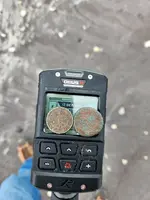 IMG_20240109_194156.webp115.8 KB · Views: 237
IMG_20240109_194156.webp115.8 KB · Views: 237 -
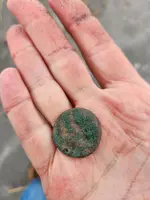 IMG_20240109_194255.webp100.7 KB · Views: 168
IMG_20240109_194255.webp100.7 KB · Views: 168 -
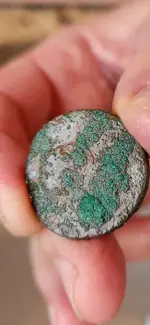 IMG_20240109_194303.webp93 KB · Views: 161
IMG_20240109_194303.webp93 KB · Views: 161 -
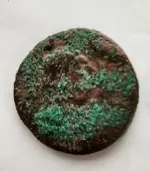 IMG_20240109_194327.webp23.1 KB · Views: 164
IMG_20240109_194327.webp23.1 KB · Views: 164 -
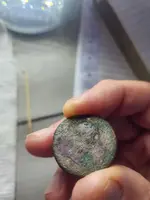 IMG_20240109_194334.webp69.5 KB · Views: 159
IMG_20240109_194334.webp69.5 KB · Views: 159 -
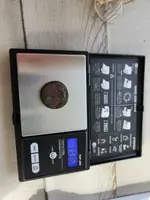 IMG_20240109_194350.webp127.5 KB · Views: 163
IMG_20240109_194350.webp127.5 KB · Views: 163 -
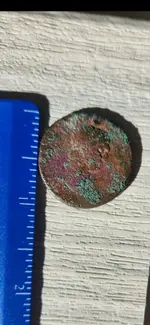 IMG_20240109_194821.webp110.9 KB · Views: 169
IMG_20240109_194821.webp110.9 KB · Views: 169 -
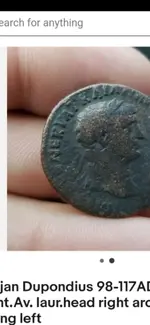 IMG_20240109_201820.webp46.7 KB · Views: 168
IMG_20240109_201820.webp46.7 KB · Views: 168 -
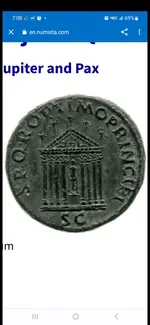 IMG_20240109_201845.webp48.2 KB · Views: 170
IMG_20240109_201845.webp48.2 KB · Views: 170
Upvote
40




